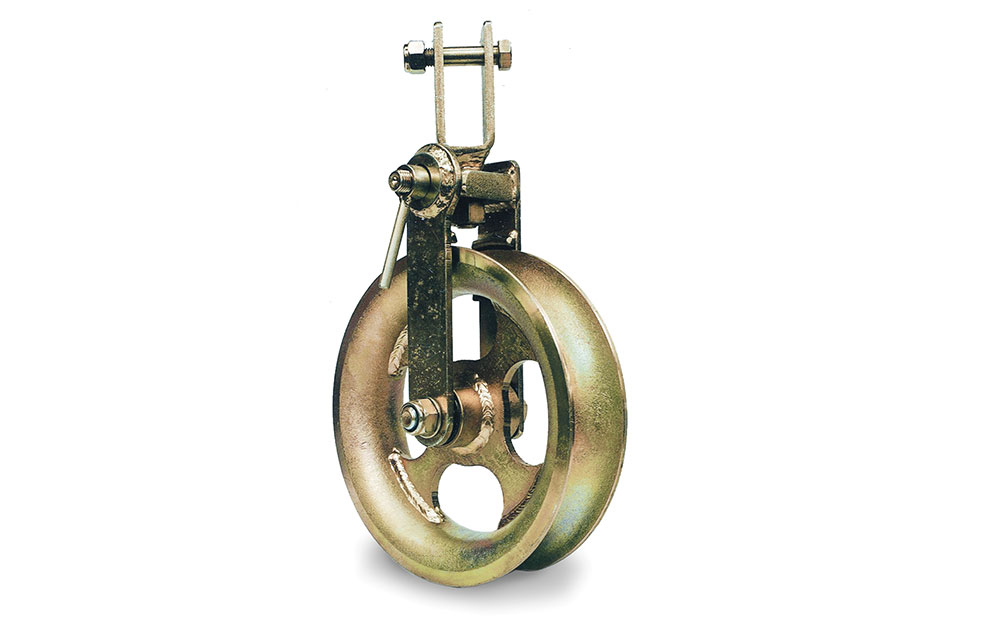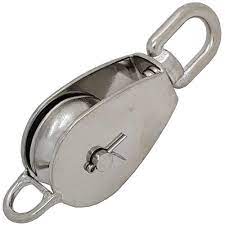Product Description
Full forged sheave, with high bearing capacity, high wear resistance and long service life
Sheave features:
1) Material: Q235B, Q345B, 35#, 45#, 60#, SSW-QR1, S45C
2) Groove surface quench: HRC45-55
3) Groove surface quench depth: 2mm-2.5mm
4) Max processing diameter: 2,
http://baoxincz
| Application: | Double Beam Crane, Gantry Crane, Bridge Crane, Tower Crane, Single Grinder Crane, Lifting Platform, Small Crane |
|---|---|
| Type: | Electric Hoist |
| Sling Type: | Wire Rope |
| Lift Speed: | 2~8m/min |
| Maximum Lifting Height: | 12m |
| Chain Falls: | 1 |
| Customization: |
Available
| Customized Request |
|---|

Can rope pulleys be integrated into existing mechanical systems for upgrades?
Yes, rope pulleys can be integrated into existing mechanical systems for upgrades. Here’s a detailed explanation:
1. Compatibility: Rope pulleys can be integrated into existing mechanical systems as long as they are compatible with the system’s design, load requirements, and operating conditions. Consider factors such as the size, type, and capacity of the pulleys to ensure they align with the existing system’s specifications.
2. Adaptability: Rope pulleys offer flexibility in terms of their configuration and mounting options. They can be adapted to fit different setups and applications. By selecting pulleys with the appropriate dimensions, attachment mechanisms, and mounting arrangements, they can be seamlessly incorporated into existing systems.
3. Enhanced Performance: Integrating rope pulleys into existing mechanical systems can lead to performance enhancements. Pulleys can provide mechanical advantage, improve load distribution, and enable directional changes, resulting in more efficient and effective operation. Upgrading with rope pulleys can increase the system’s capabilities and productivity.
4. Reduced Effort: Rope pulleys can reduce the effort required to perform tasks within the mechanical system. By providing mechanical advantage, they can decrease the force needed to move or lift loads. This reduction in effort can enhance the ergonomics of the system and reduce the strain on workers, leading to increased productivity and improved safety.
5. Cost-Effective Solution: Integrating rope pulleys into existing mechanical systems can be a cost-effective solution compared to replacing the entire system. By upgrading specific components with pulleys, the system’s functionality and performance can be improved without the need for a complete overhaul. This approach can save time, resources, and expenses associated with system replacement.
6. Customization: Rope pulleys offer customization options to tailor the upgrade according to specific requirements. Different pulley sizes, materials, and designs can be selected based on the system’s needs and constraints. This customization allows for a more optimized and tailored solution when integrating pulleys into existing mechanical systems.
7. Expertise and Consultation: Engaging with experts or consulting with professionals who specialize in rope pulleys and mechanical systems can provide valuable insights and guidance during the integration process. They can assess the existing system, recommend suitable pulleys, and provide expertise on the installation and integration procedures.
When considering integrating rope pulleys into existing mechanical systems for upgrades, it is essential to evaluate compatibility, adaptability, performance enhancements, reduced effort, cost-effectiveness, customization options, and seek expert advice if needed. By carefully planning and executing the integration, rope pulleys can effectively enhance the functionality, efficiency, and performance of the existing mechanical systems.

What role do bearings play in ensuring the smooth operation of rope pulley systems?
Bearings play a crucial role in ensuring the smooth operation of rope pulley systems. Here’s a detailed explanation of their role:
1. Reducing Friction: Bearings are designed to reduce friction between moving parts. In a rope pulley system, the bearings are typically located at the axle or the sheave, where the rope makes contact. By providing a smooth surface for the rope to glide over, bearings minimize friction and prevent excessive wear on both the rope and the pulley. This reduction in friction enhances the overall efficiency of the system.
2. Supporting Load: Rope pulley systems often handle substantial loads. Bearings provide support and distribute the load evenly across the pulley, ensuring smooth and stable operation. They help prevent excessive stress on the pulley components and maintain the integrity of the system, even under heavy loads.
3. Enabling Rotation: Bearings facilitate the rotation of the pulley. They allow the pulley to rotate freely around the axle or sheave, enabling the rope to move smoothly. This rotation is essential for changing the direction of the force and facilitating the lifting or movement of the load. Bearings ensure that the rotation is effortless and consistent, contributing to the smooth operation of the pulley system.
4. Increasing Durability: By reducing friction and supporting the load, bearings contribute to the durability of the rope pulley system. They help prevent excessive wear and damage to the pulley components, extending the lifespan of the system. Additionally, bearings are often designed to withstand heavy loads, harsh environments, and repetitive motion, further enhancing the longevity and reliability of the pulley system.
5. Minimizing Maintenance: The use of bearings in rope pulley systems reduces the need for frequent maintenance. The smooth operation provided by bearings reduces wear on the pulley and the rope, resulting in less frequent replacement and maintenance. This helps optimize the uptime of the system, reducing downtime and associated costs.
In summary, bearings play a vital role in ensuring the smooth operation of rope pulley systems by reducing friction, supporting the load, enabling rotation, increasing durability, and minimizing maintenance requirements. Their use enhances the efficiency, reliability, and lifespan of the pulley system, making them an essential component in various lifting and moving applications.

Can you explain the different types of rope pulleys and their functions?
There are different types of rope pulleys, each designed to serve specific functions and applications. Here’s an explanation of some common types of rope pulleys and their respective functions:
- Fixed Pulley: A fixed pulley has a stationary axle and does not provide any mechanical advantage. It changes the direction of the force applied to the rope, making it easier to pull or lift loads vertically. Fixed pulleys are often used in combination with other pulleys to create more complex pulley systems.
- Movable Pulley: A movable pulley has an axle that is free to move, allowing it to be attached to the load being lifted. When a rope passes through a movable pulley, the pulley and the load both move in the same direction. Movable pulleys provide a mechanical advantage by reducing the effort required to lift heavy loads.
- Block and Tackle: A block and tackle system consists of multiple pulleys arranged in a combination of fixed and movable pulleys. This arrangement provides a significant mechanical advantage, allowing for the lifting of extremely heavy loads with reduced effort. Block and tackle systems are commonly used in construction, rigging, and maritime applications.
- Snatch Block: A snatch block is a specialized type of pulley with a side opening that allows the rope to be easily inserted or removed. Snatch blocks are often used in rigging to redirect the force applied to the rope and change its direction. They are particularly useful in situations where the rope needs to be redirected around obstacles or to achieve a different pulling angle.
- Wire Rope Pulley: Wire rope pulleys are designed specifically for use with wire ropes, which are commonly used in heavy-duty lifting and rigging applications. Wire rope pulleys have grooves specifically shaped to accommodate wire ropes, ensuring proper alignment and reducing wear on the rope.
- Rescue Pulley: Rescue pulleys are specialized pulleys designed for use in rescue operations and emergency situations. They are typically lightweight, compact, and feature additional safety features such as locking mechanisms or built-in swivels to facilitate efficient and safe rope handling.
These are just a few examples of the different types of rope pulleys available. The choice of pulley type depends on the specific requirements of the application, including the desired mechanical advantage, load capacity, rope type, and environmental conditions. By selecting the appropriate pulley type, users can optimize the efficiency, safety, and performance of their lifting, pulling, or redirecting operations.


editor by CX
2023-10-03